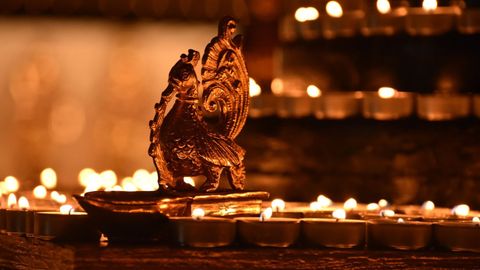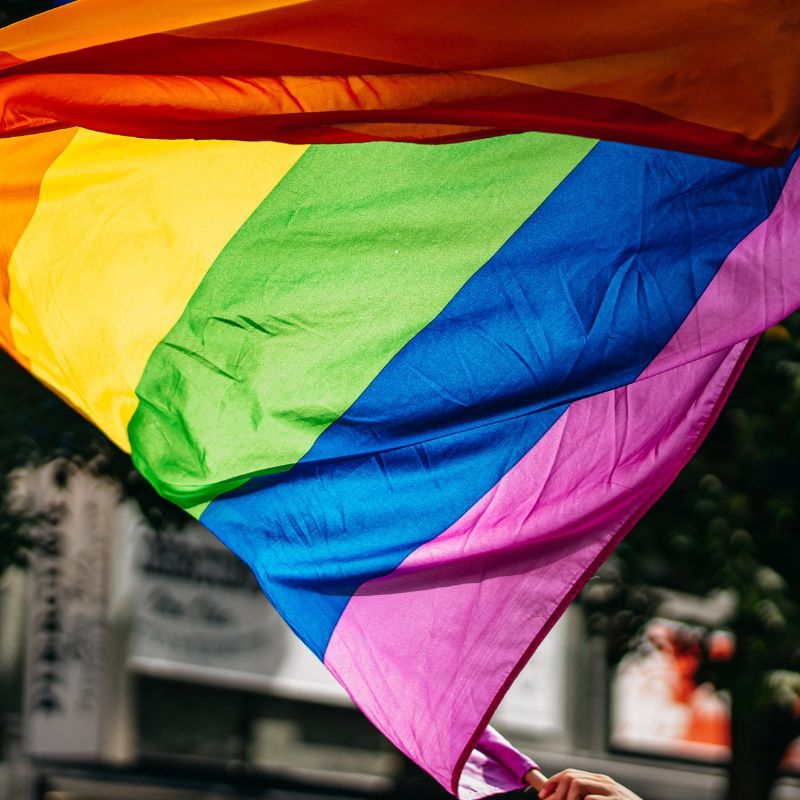
With the festive season in full swing, India is decking up in lights, sparkles and divinity. The end of the nine-day Navratri celebrations and Dussehra makes way for the eagerly awaited Diwali, or Deepawali, which falls on November 12, 2023.
The Hindu festival is celebrated by millions worldwide across a series of occasions, signifying good over evil, prosperity and the triumph of light over all our dark desires.
Diwali, which derives its name from the Sanskrit word ‘Deepa,’ meaning clay lamps, and ‘āvali,’ meaning a row or continuous line, also goes by the names of Jain Diwali, Bandi Chhor Diwas, Tihar, Sowanti, Sohrai, Bandna and so on.
The festival occurs in the Hindu months of Ashwin and Kartik (coinciding with mid-October to mid-November of the Gregorian calendar). The celebrations, spanning five days, include Dhanteras, Chhoti Diwali, Diwali (the main festival falls on the third day), Govardhan Puja and Bhai Dooj, each carrying its own significance.
According to ancient texts, although Diwali started as a harvest festival, it has transcended to incorporate themes like removing spiritual darkness, embracing one’s inner light, the triumph of good over evil and ushering in prosperity and wisdom over centuries.
Know more about the significance of Diwali, how it is celebrated and what does it mean
Diwali celebrations in different parts of India

Though Diwali is celebrated across the country, each region holds distinct connotations and rituals, all rooted in the rich mythology of ancient India.
Northern India celebrates the return of Lord Rama to Ayodhya after 14 years in exile, during which he defeated the demon king Ravana. People decorate their houses with lights, diyas (earthen lamps) and flowers, just the way the people of Ayodhya had welcomed their king, as described in the ancient texts. They worship Goddess Lakshmi for wealth and prosperity and Lord Ganesha for wisdom.
On the other hand, South India celebrates the Festival of Lights to commemorate Lord Krishna’s victory over the demon Narakasura. In the western part of the country, Diwali marks the day when Lord Vishnu sent the demon Bali as the king of the nether world, while Goddess Kali is worshipped in eastern states like Bengal.
Whatever the significance is, the threads of togetherness, cleaning the house to remove dark shadows and welcome the deity, buying traditional clothes, exchanging gifts and enjoying a time of fun and frolic unite everyone during Deepawali.
Diwali celebrations: Traditions, rituals and lores

Lighting lamps, making colourful rangolis (decorative designs made with ground rice and colours), arranging flowers on doors and windows, exchanging sweets and dressing up in bright traditional clothes are some of the essentials of celebrating Deepawali. Every Indian household starts prepping for the festival by sprucing up their abode and decorating it with lights and flowers. Many also opt for renovating their homes and buying new appliances and decor items.
The five-day festival starts with Dhanteras (November 10, 2023), where ‘dhan’ and ‘teras’ mean wealth and number 13, respectively. The occasion falls on the thirteenth day of Krishna Paksha during the month of Ashwin in the Hindu calendar. It is considered auspicious to buy utensils, gold jewellery and home appliances on this day.
On Dhanteras, there is a custom of lighting up the house with 13 used diyas from the previous year’s celebrations. Each of these diyas has its own significance in Hindu tradition. For instance, the first one is lit in the southern corner on the outer side of the house to ward off death, while the second one is lit with ghee and kept at the altar inside the house. The third is placed at the goddess Lakshmi’s idol for prosperity and good fortune.
The day before Diwali 2023, the second day of the festivities, is fondly known as Choti Diwali (11 November 2023) and serves as a grand rehearsal for the main event. Also known as Naraka Chaturdashi, it falls on the 14th day of the Hindu calendar month of Ashwin or Kartik. It marks the day Krishna defeated Narakasura (the lord of hell). Homes are decked up with rangoli, flowers and earthen lamps. Final touches are given to decorations, and last-minute errands are taken care of.
In the eastern regions of the country, a custom similar to the lighting of 13 lamps on Dhanteras is part of the various rituals performed on Choti Diwali. Bengalis usually light 14 diyas on this day. Known as ‘chothyo prodeep‘, the diyas are lit to pay respects to ancestors, and a meal called ‘chothyo saag’ is prepared with 14 varieties of green leafy vegetables and is served with rice.
Goddess Kali is the worshipped deity. Legend has it she was born to save the earth and heaven from the clutches of notorious demons. However, after defeating them, goddess Kali lost control over her fury and started a slaughtering spree, not sparing anything that came her way. Lord Shiva had to intervene and lay on her path. When the goddess stepped on him, her tongue came out in shame, and she finally calmed down.
Family members get together to prepare ‘bhog’ (food offered to deities) for the devi and later distribute it among the devotees.

With the arrival of Diwali (November 12, 2023), the festive spirit is at an all-time high as people adorn themselves in their finest attire. The homes come alive with decorative lights, welcoming the gods and goddesses. As the sun sets, deities Ganesha and Lakshmi are worshipped.
Although some do burst crackers with their friends and family, many have become aware of their impact on the already depreciating air quality in India. Along with worsening air pollution, the loud noise caused by fireworks affects everyone, including animals.
Some people also play cards and gamble as a mark of inviting wealth and good fortune, followed by a Diwali bash. And, how can there be any party without delicious food? Sweets, snacks, dry fruits and a whole lot of other delectable fare make the occasion scrumptious.
The fourth day is Govardhan Puja (November 14, 2023), or Annakut Puja or Balipratipada, which marks the victory of Lord Krishna over Lord Indra. Food items like wheat, rice, curry made of gram flour and leafy vegetables are prepared to offer Lord Krishna.
Customs on this day differ in various regions. In North India, people dedicate their mornings to worshipping the tools of work, businessmen worship their ledgers and artists express their gratitude towards their brushes and colour palettes.
The fifth and final day of Deepawali celebrations is celebrated as Bhai Dooj (15 November 2023). Also known as Bhau Beej, Bhai Tilak or Bhai Phonta, the day is much like Raksha Bandhan and sisters put a coloured dot (called tilak in Hindi) on their brother’s forehead as a mark of love and respect. They exchange gifts, and while brothers promise to protect their sisters, sisters pray for their well-being.
Deepawali and other religions
In the diverse Indian culture, Deepawali celebrations also have varied significance for different religions and faiths. For the Jain community, Diwali is the period of enlightenment of Mahavira, the Jain Tirthankara (leader), to attain moksha or liberation.
For the Sikh community, the festival period is the time of Guru Hargobind’s return to Amritsar from captivity in Gwalior. This 18th-century tale resonates with the spirit of Lord Rama’s return to Ayodhya.
Deepawali may not be a significant occasion for the Buddhist community, but it marks the day when Emperor Ashoka converted to Buddhism in the third century BCE. Vajrayana Buddhists celebrate by lighting lamps and decorating monasteries.
What do people wear on Diwali
The festival of lights is all about brightness and sparkle. People wear traditional clothes like ornate sarees, lehenga and choli, salwar suits and dresses. Traditional jewellery and flower garlands to adorn the hair are also part of the significance of Deepawali. Men, on the other hand, opt for kurtas and sherwani suits to usher in the festive joy.
Deepawali delicacies

Diwali is a time to gorge on mouth-watering snacks, seasonal dishes and loads of sweets.
From savoury snacks like samosas (a triangular savoury pastry fried in oil, containing spiced vegetables, especially potato) and aloo tikki (fried potato patties) to farsan (Gujarati snack made of gram flour) and dhokla (Gujarati snack made of rice and split chickpeas), the Festival of Lights is also a festival for foodies. Daal (lentil curry), naan (an Indian bread), chole bhature (spicy chickpea curry with fried bread), nankhatai (flaky slated biscuit) and chai are some of the most awaited foods of the season.
However, desserts undoubtedly steal the show.
People love to treat themselves with ladoos (fried and sweetened gram flour balls), gulab jamuns (flour balls deep fried and served in a sugar syrup flavoured with roses), jalebis (spiral-shaped sweets made of flour and sugar syrup) and barfis (milk-based fudgy blocks of sweets). Halwa (semolina boiled with milk, almonds, sugar, butter and cardamom) and kheer (rice pudding) are also relished by many.
This story first appeared here.
(Hero image credit: Sash Sriganesh/ @sashwathi/ Unsplash; Feature image credit: Joshuva Daniel /@joshuvadaniel/ Unsplash)
Related: From India To The World: How Diwali Is Celebrated Across Continents
Frequently Asked Questions (FAQs)
-What is the significance of the Diwali festival?
The festival of lights is a celebration of light over darkness, good over evil and represents wealth and prosperity. The Hindu festival represents the spiritual victory of all things dark, gloomy and evil and ushers in prosperity.
-What are the five days of Diwali?
The five days of Diwali are Dhanteras, Choti Diwali, Diwali, Govardhan Puja and Bhai Dooj.
-Why is Diwali important to us?
Diwali is celebrated to pray for happiness, prosperity and fortune. People light lamps to eradicate darkness and evil spirits and usher in light and sparkle.
-What is the meaning of Diwali?
Diwali or Deepawali is derived from the Sanskrit word ‘deepa’, meaning lamp and ‘avali’, meaning rows or series.










